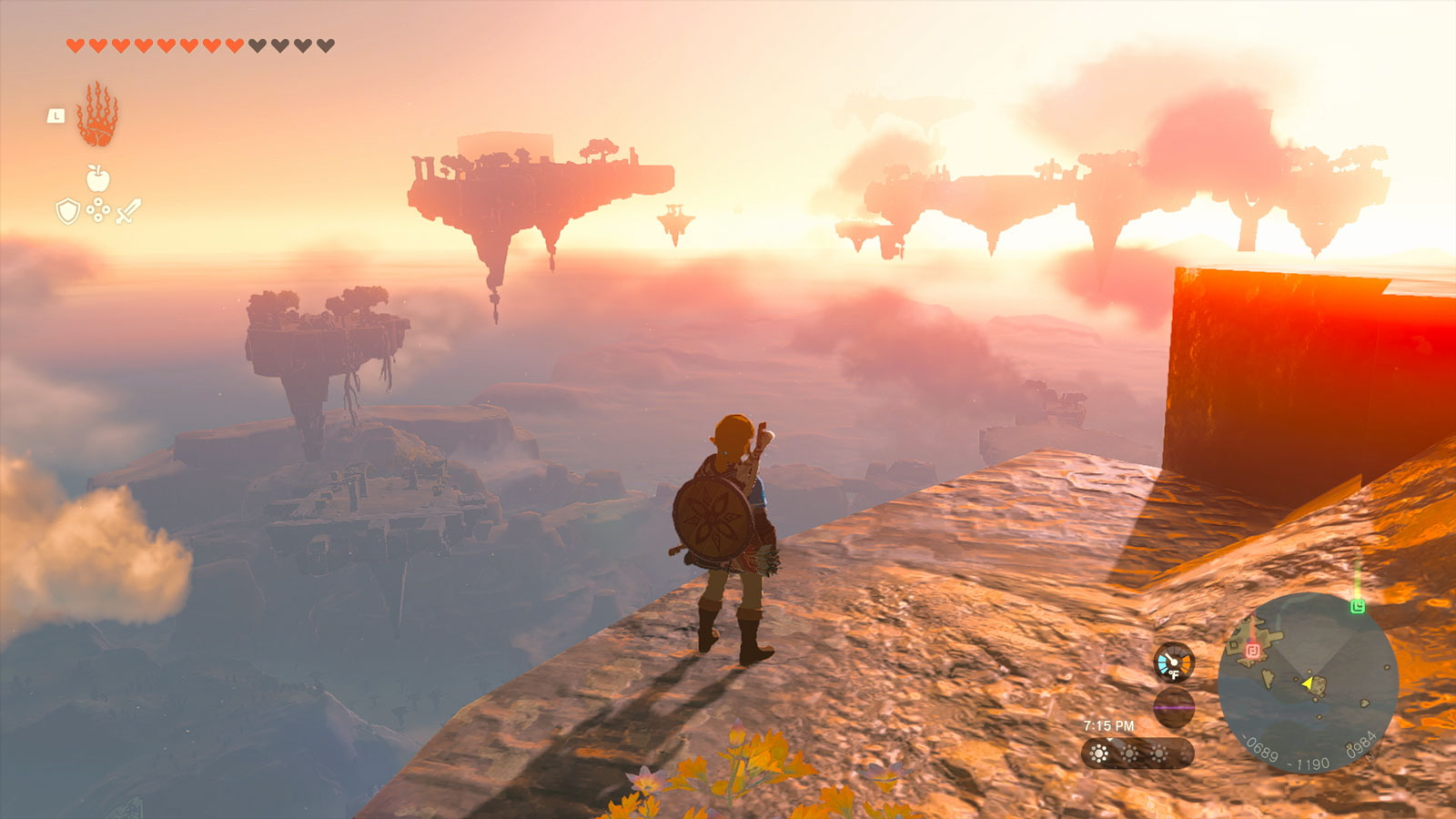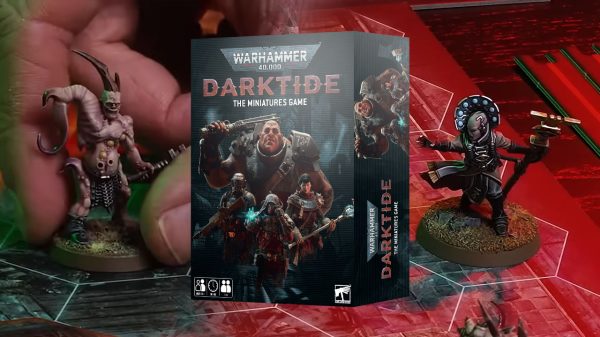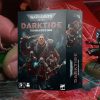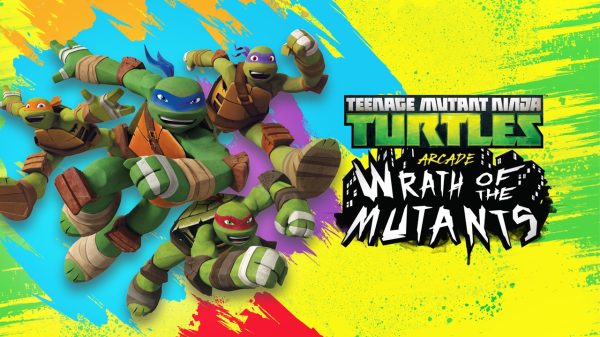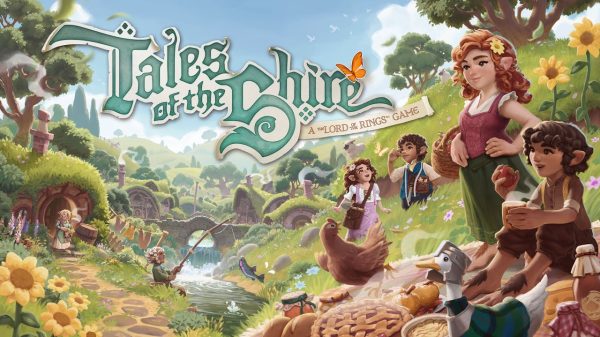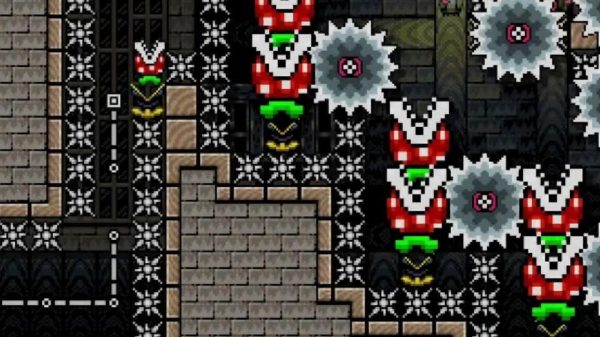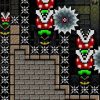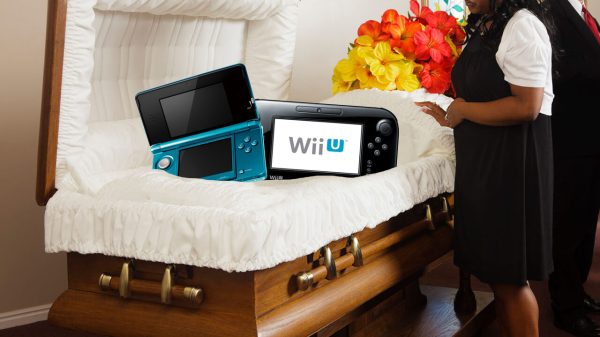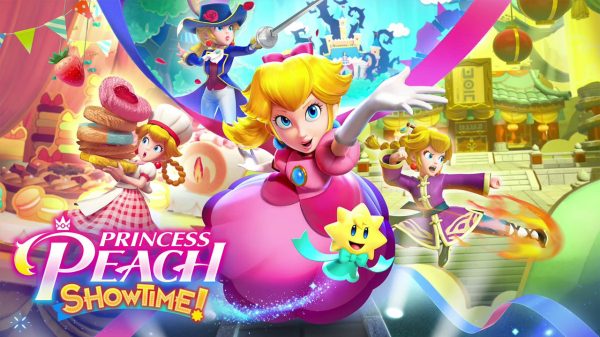How do you top a masterpiece?
It’s a question that might bother most of us, but it’s one that Nintendo has been asking and answering for almost the entirety of the company’s history. While some efforts have yielded more success than others, Nintendo’s flagship franchises have typically found a way to outdo all that’s come before and raise the bar to new heights.
‘Height’ is an apt word, for in The Legend of Zelda: Tears of the Kingdom, Link breaks free of his terrestrial bonds and heads skyward (sans sword, at least for a while). It’s here amidst floating rock and billowing cloud that Nintendo once again seeks to confound, subvert and exceed our expectations, and having spent some two hours hands-on with the game, I suspect that Nintendo is about to do just that.
My time with the game was divided into three categories; the first was a hands-off session where a representative from Nintendo played through an early section of the game, explaining to me a number of the new systems and gameplay mechanics introduced in Tears of the Kingdom. The second part of the session was hands-on where I was in the Sky Isles. It was a chance to experiment with the sandbox and solve several puzzles in that surrounding area. The final section was set back on the terra firma of Hyrule, where I was tasked with reaching a heavily guarded enemy tower by whatever means I chose, an interesting challenge in a sandbox as flexible as this.
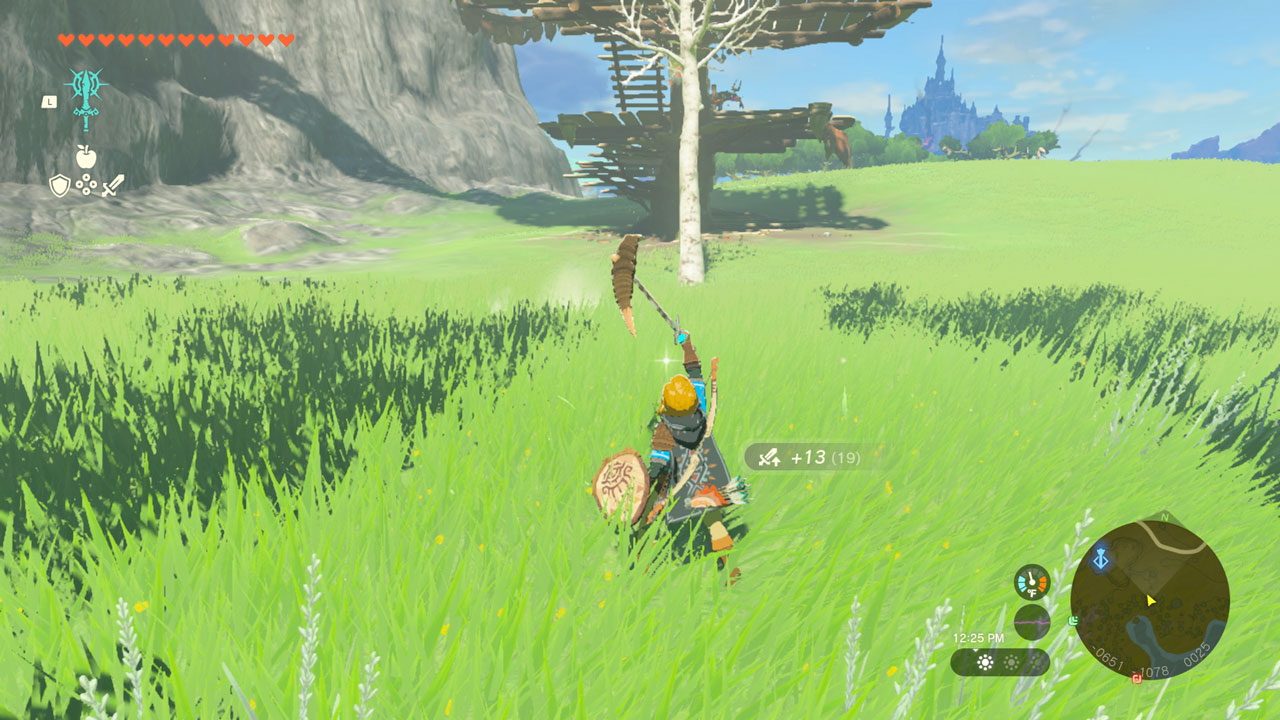
I’d have to work up to that challenge though, first being shown how I’d be building all those clever contraptions we’ve seen flying, floating, and zooming through the most recent trailer. The ability that powers all of this building is called Ultrahand, and it lets me pick up an object of almost any size and combine it with other objects. Planks of wood, crossbeams, wheels, logs, rocks and so much more can be picked up, spun this way or that with the D-Pad and then connected to other objects. I built myself a car in under a minute and while it probably won’t pass any industry-level safety tests (nor any awards for design aesthetic) it was a functional vehicle that I could use to speed me across the expanses of Hyrule.
What powers my vehicle, though? What makes it go?
Enter the Zonai, an ancient tribe that happens to leave a bunch of very effective and very functional machinery just laying around. These objects are called Zonai devices, and they’re things like fans, rockets, air balloons, and flamethrowers, just to name a few. Each of these devices can be attached to something you’ve built and then activated by hitting it with your weapon. In the case of my car, I attached two rockets to the back and a joystick to the front. I gave the rockets a quick whack with a stick and I was suddenly Mad-Maxing my way forward at lightning speed (until my car caught on fire because I thought it would be funny to also attach some flame throwers to it).
The combination of basic building materials and Zonai devices allows for a seemingly limitless degree of build freedom. We’ve seen cars, flying rafts and hovercrafts in the trailers, but I personally managed to build myself a goofy-looking hot air balloon and a very slick, battery-powered glider. I got the sense that I’ve only seen a fraction of what the final game will offer in terms of build flexibility, and I suspect many a YouTube career will be made with people showcasing increasingly ingenious (and insane) creations.
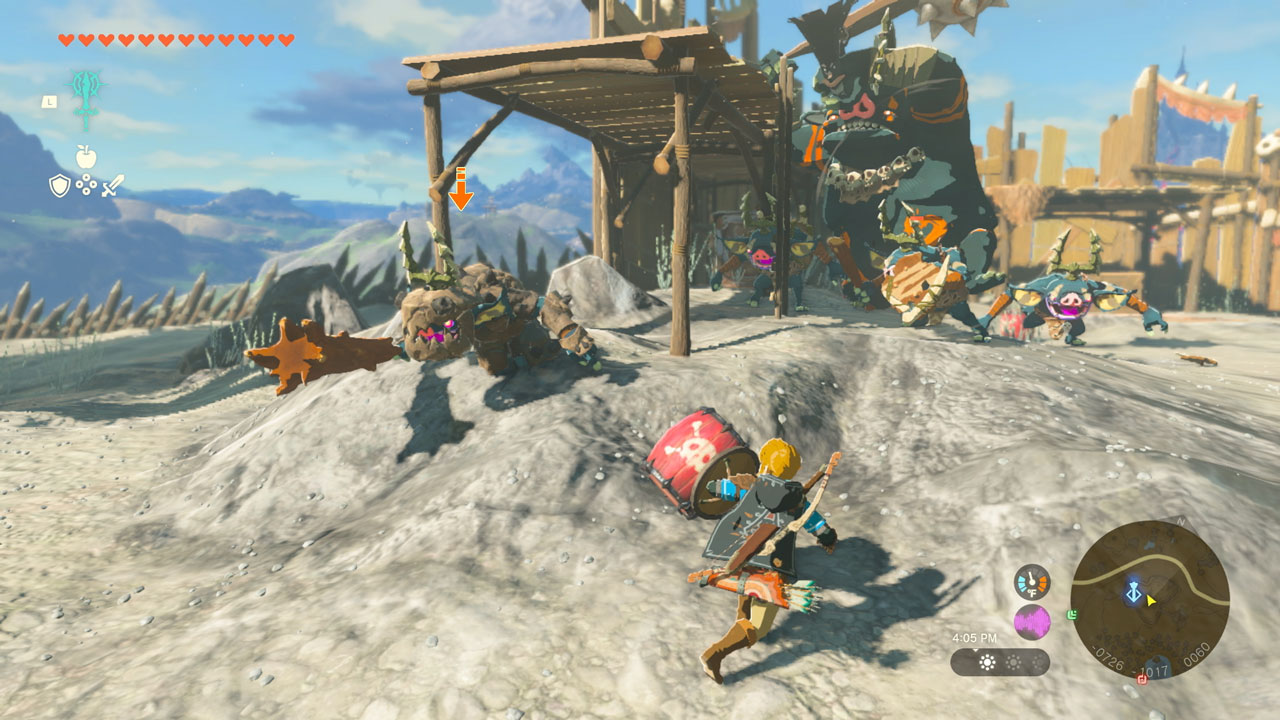
You’d think that Ultrahand might be enough on its own for any game to hang its hat on, but Nintendo ups the ante even further with an equally transformative new ability: Fuse.
Fuse lets you combine almost any item with your melee weapon, shield or arrows. We’ve already seen from an earlier gameplay showcase the different effects that fusing can have on arrows. For example, Fuse some eyeballs with an arrow to make the arrow track targets. I was able to test out fusing a bunch of minerals – the Ruby for example makes things go boom, while Topaz creates a large electrical explosion that will stun and damage enemies in a huge radius. The ‘Meat Arrow’ combination that did the rounds on social media a few weeks back is very much a real thing, and it excels in distracting enemies or getting them to clump together as they all mindlessly clammer for some skewered steak.
Fuse starts to get really wild when it comes to your melee weapon and shield. In my demo I was able to Fuse a large, spikey wrecking ball onto the end of my sword, massively increasing its damage and turning it into a blunt weapon that could smash armour. I was able to Fuse a barrel of dynamite to my shield which would immediately KO any enemy dumb enough to hit it. I was even able to Fuse an entire minecart onto my shield. Just…a minecart, that I could carry around on my shield, for some reason. The basic principle is that if it isn’t nailed down, you can probably fuse it to your weapon or shield, and again, it’s almost impossible to imagine just how many ridiculous Fuse combinations people will uncover in the full game.
The third major ability I got to experiment with was called Recall. This allows you to reverse the flow of time, but only for specific objects. In my playthrough, enemies had prepared to roll a large wrecking ball toward me as I made my way up a ramp, but as it came near, I was able to Recall it. Now the Moblins heading down the ramp were the ones in the wrecking ball’s path, softening them up for me to mop them up with my weapons, arrows, and any objects I threw at them using Ultrahand.
But that sandbox is so dense and so promising that when you fuse that with your knowledge of this series and the exceptionally high bar it always maintains, it’s difficult to not get very, very excited
My demo concluded with a brief tour of the Sky Isles, solving a range of puzzles that asked me to utilise my abilities in different, creative ways. Like Breath of the Wild it’s all very physics driven, but unlike Breath of the Wild, these puzzles all appear to be out in the landscape rather than hidden behind shrines. Even in my brief play session I counted at least a dozen different puzzle challenges, all of which required me to either build, fuse, recall or some combination of the three.
Which brings me to an important observation about the nature of Tears of the Kingdom: this is a finicky game to play. Games like God of War or The Witcher, or even classic Zelda Games like Ocarina of Time – they aren’t finicky. You just explore the world and beat up bad guys. Breath of the Wild was obviously finicky in its own way owing to its weapon durability, and the abilities you were using to solve puzzles, but Tears of the Kingdom is definitely a few orders of magnitude above that. Most of what I encountered required me to stop and think, go in and out of my inventory, use the building system, carefully orient Zonai devices, and manage their power levels, all while trying to collect the necessary raw materials to make all of this possible.
As I was playing, I was struck by how much Tears of the Kingdom feels like a survival game. The need to scavenge for everything you’ll use was already in Breath of the Wild, but the Fuse system and the Ultrahand build system all gave me that feeling I would get when playing stuff like Valheim or V-Rising; that feeling of taking stock of the resources you have to hand to see what you can cobble together with them, or picking up and discarding things based on how useful you think they may be to you in future.
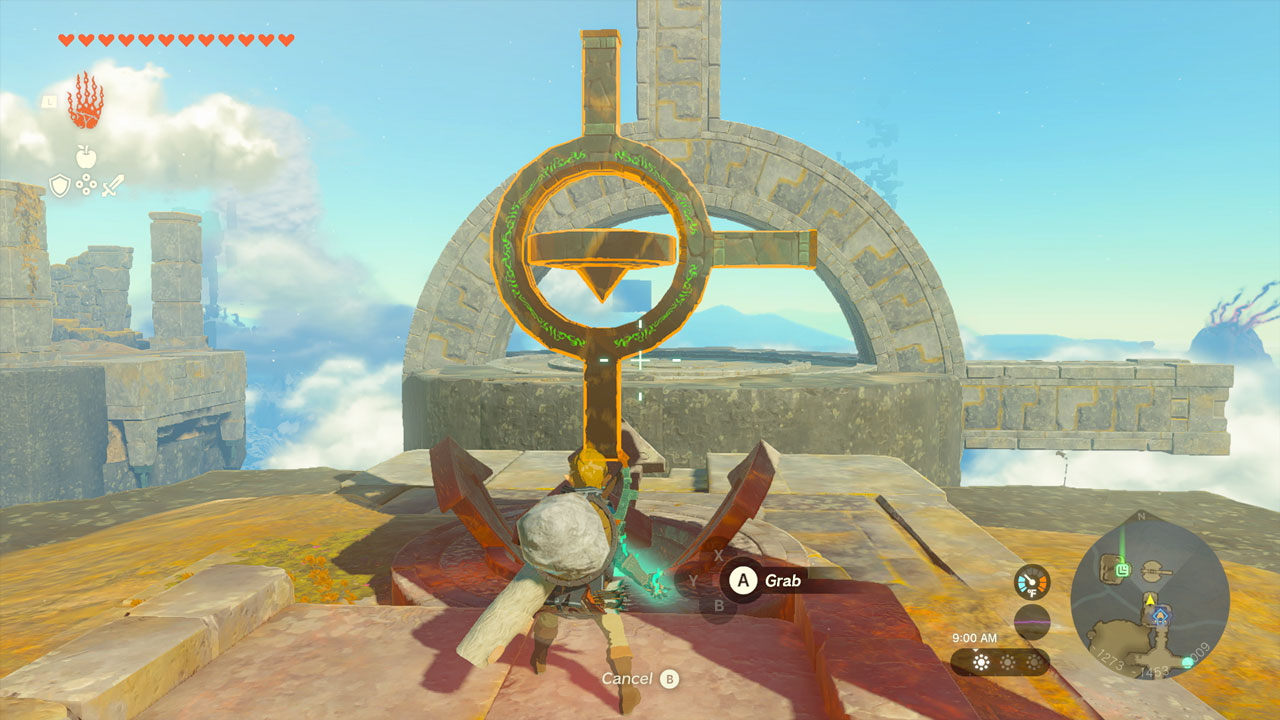
Personally I love that feeling but I can already tell that there are going to be some people who look at this and think: “Nah, that’s too much work for me.” If you just want to roll through an action-adventure game that involves swinging a sword a bunch of times, Tears of the Kingdom is very likely not going to be that. Something else that may give people pause is the graphical performance and stability, as the number of frame-rate drops that I experienced in just this slice of the game was concerning.
The question I always ask when looking at this stuff is: Does it affect the game, or is it just a visual annoyance? I think it affects the game here in two important ways. The first is that the game does become manifestly less responsive when that frame rate drops and given that the frame rate wasn’t very high to begin with, combat and exploration start to feel pretty crappy when they’re running at circa 15 frames a second.
Secondly, and I think almost more importantly, these frame drops remind you that this is still just a video game, and I know that sounds lame but Hyrule is such a special, magical place, and this journey that you’re on is so transportive and immersive. To have these moments where the framerate just dies – it does take you out of that experience.
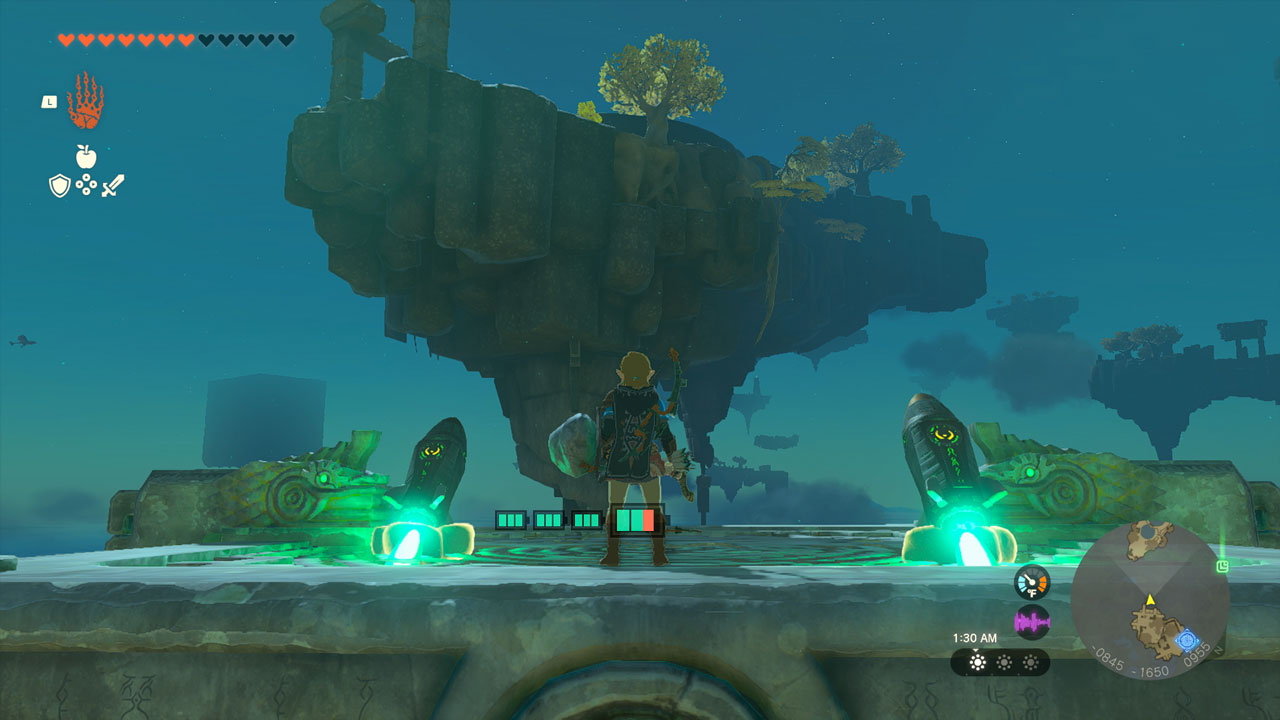
Cards on the table, though. I don’t think those performance issues will be enough to ruin what I anticipate is going to be a pretty extraordinary video game. The level of imagination that is coursing through every single bit of this is so humbling to experience for yourself. I could have spent hours on just the tiny slice they gave me, experimenting with every fuse combination, building ever more elaborate contraptions, solving each puzzle and combat challenge in a completely new way. I wasn’t even able to see any of the story reveals, major characters, cutscenes, any of the dungeons, or any of the more elaborate locations. It was just the sandbox for now. But that sandbox is so dense and so promising that when you fuse that with your knowledge of this series and the exceptionally high bar it always maintains, it’s difficult to not get very, very excited. Unsurprisingly, Tears of the Kingdom looks to be another classic in the making, and I cannot wait to get lost in Hyrule all over again.
The Legend of Zelda: Tears of the Kingdom launches on Nintendo Switch on May 12, 2023.
Previewed at a preview event held by Nintendo
Ralph 'Skill Up' Panebianco is an Australian-based videogames commentator who couldn't hack it in print, so he had to turn to the lowly, scummy, under-handed world of YouTube. There he scratches out a living dolling out lukewarm takes like 'does everyone agree Fallout 76 bad?', while trying to surreptitiously convince people that Destiny 2 is good (it isn't).




